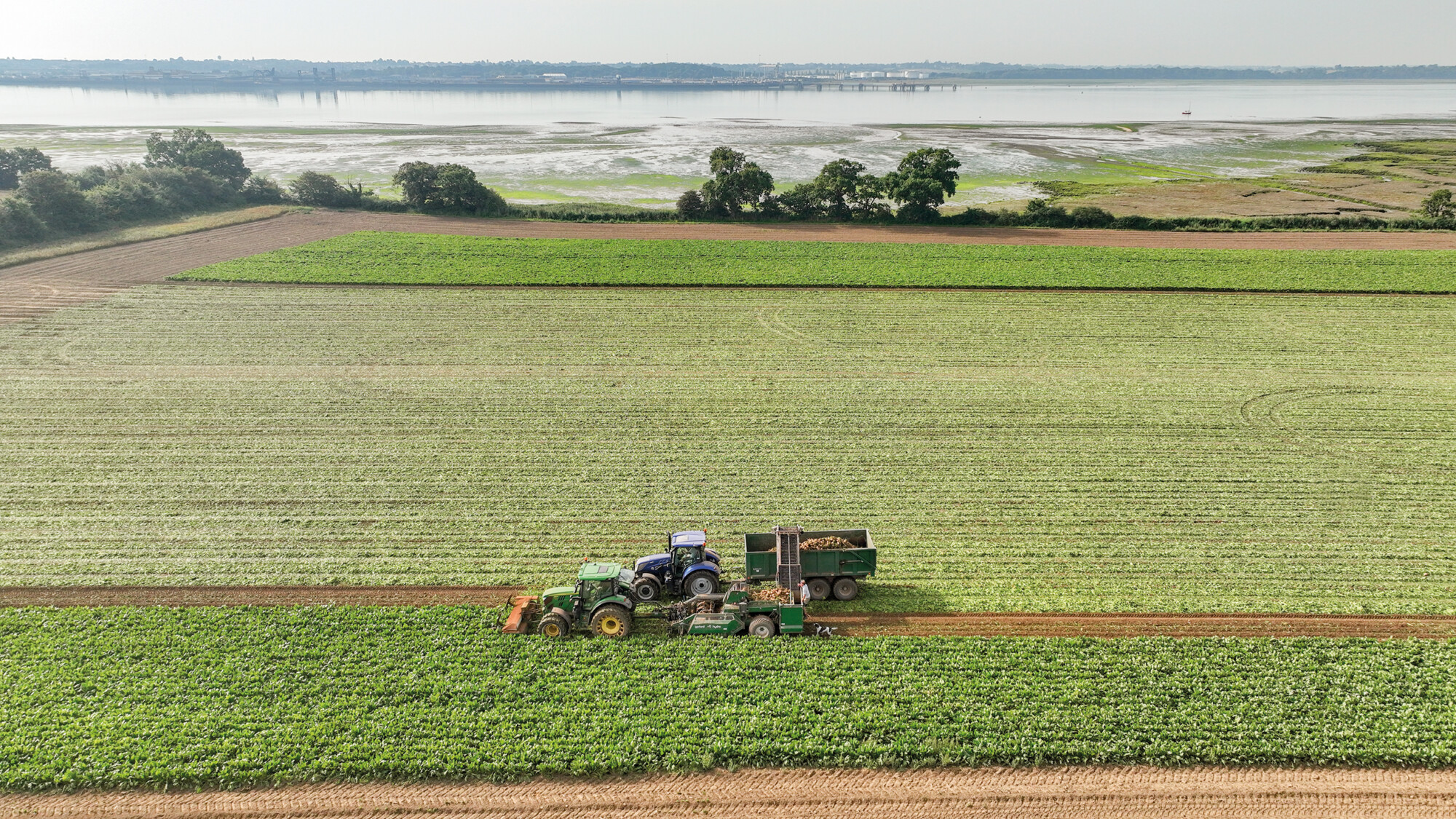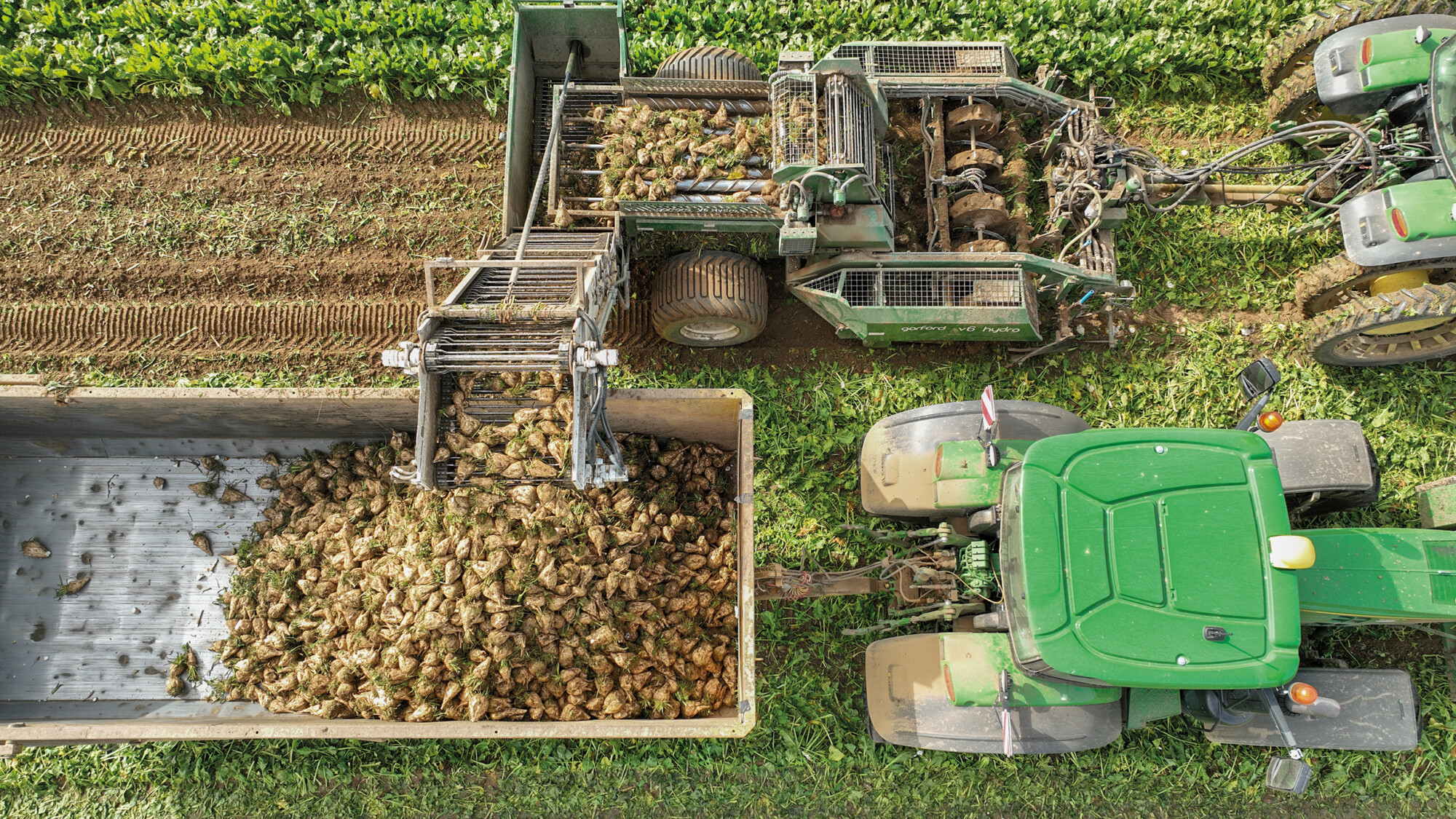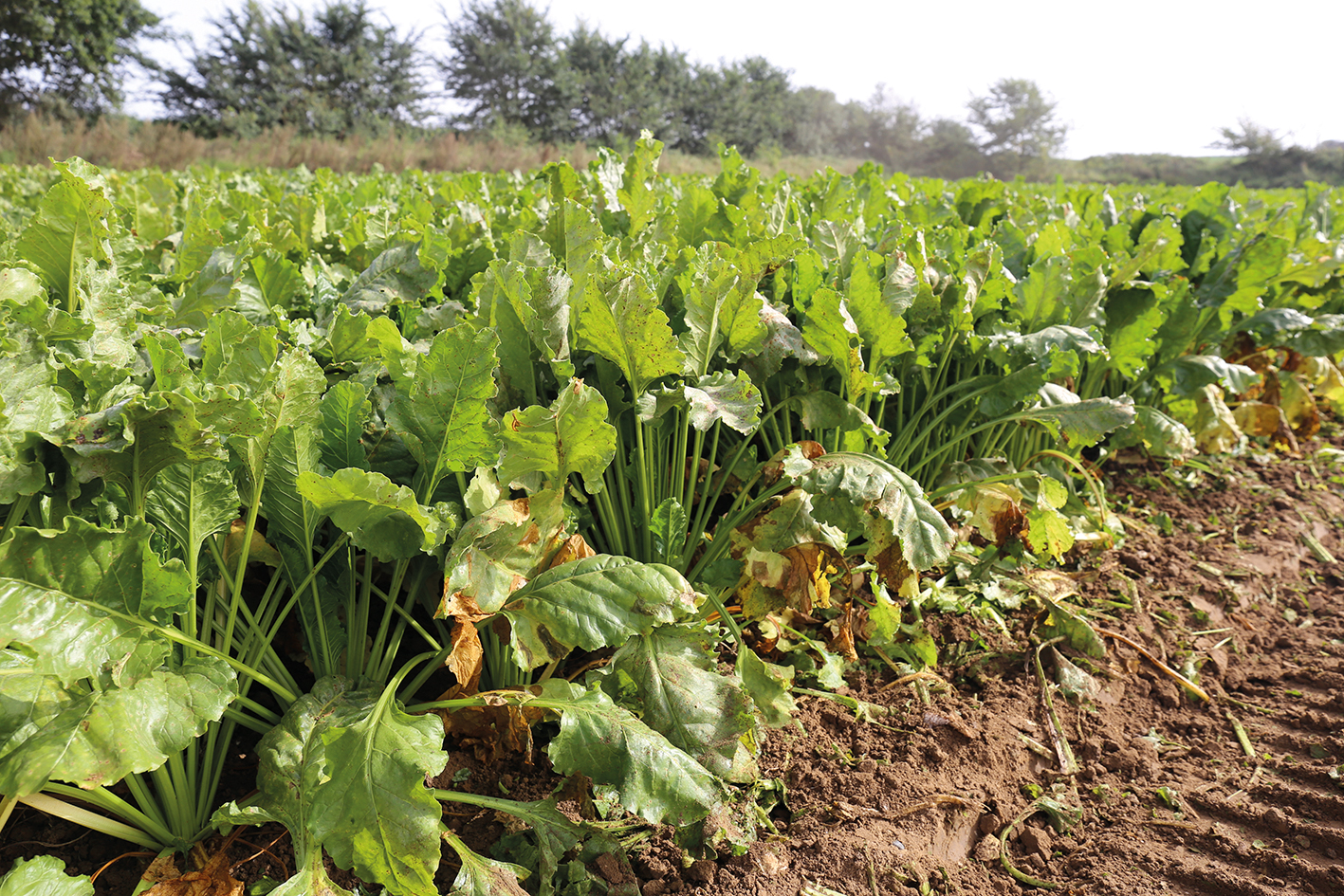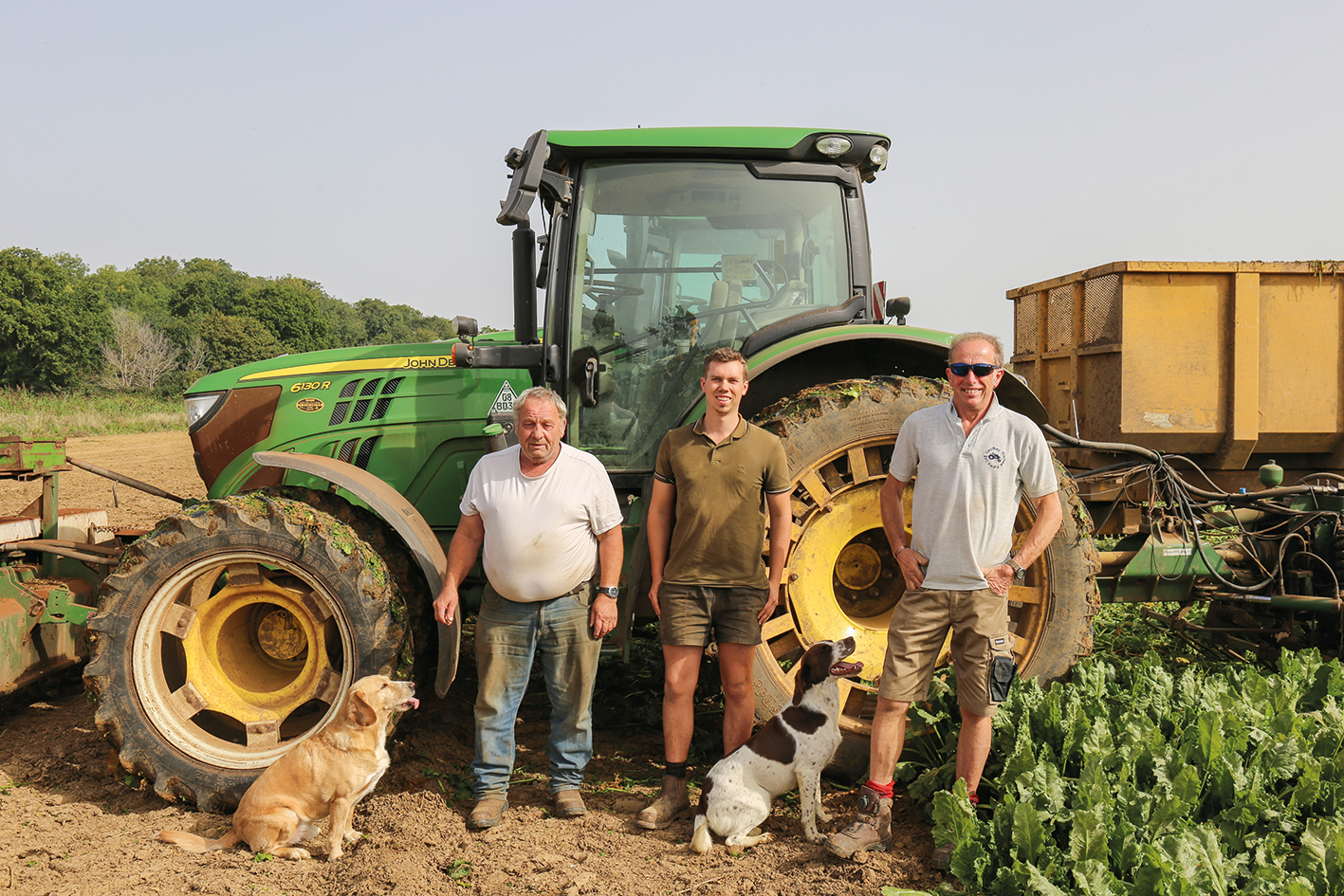Sugar beet : It’s a long game, which benefits the whole farm
19th October 2023
In early September, Farmers Guide visited Shotley Peninsula farmer Geoffrey Mayhew in Suffolk as he began lifting some early crop for this year’s sugar beet campaign.

Based at Pond Farm, Erwarton, Geoff Mayhew of Geoffrey Mayhew Farms Ltd farms 820ha of mixed arable cropping on the light, sandy soils of the Shotley Peninsula, in Suffolk.
Mr Mayhew has 150ha of beet in the ground this year, with sugar beet grown at least one year in five. Having grown beet consistently for over 50 years, he’s well versed in the peaks and troughs of this fickle root crop.
The arable rotation also includes Group 1 milling wheat (if they can get the premium), malting barley (a key crop for the farm which dovetails nicely with the sugar beet), potatoes for the pre-packed sector, and a few legumes which replaced OSR after the flea beetle made it unfeasible.
In addition, he’s recently moved from onions to parsley, which is grown on a contract.
Residual boost
Mr Mayhew explains that cereal rotations have their own inherent problems when it comes to building up disease, creating a heavy reliance on pesticides – whereas introducing root crops gives a big boost to the following cereals by breaking the disease cycle, and giving a good, clean start for the wheat.
The residual nutrition from the sugar beet, along with the soil structural benefits created by the deep, heavy roots, all aid cereal crops in establishing well.
Soil health is a key part of Mr Mayhew’s management plan, and requires a lot of attention to detail. He ensures he harvests beet in good conditions to limit soil damage, and has purchased a new trailer with flotation tyres to reduce compaction, as well as investing in a second-hand Garford V6 Hydro trailed harvester – which is comparatively light at only around 5t and doesn’t require a high hp tractor to pull it.
The emphasis in the sugar beet industry, he says, is on huge, “monstrous” machines which are aimed far more towards contractors; but for Mr Mayhew, the financial and soil health benefits of using smaller machines are important. The machinery can be used by members of his close-knit team, keeping them in employment over the winter months. Plus, thanks to the fairly basic engineering, Mr Mayhew can generally maintain the machinery himself.
The harvester lifts six rows, just as the larger machines do, with the trade-off being that it runs a little slower in comparison.
The farming enterprise also grows potatoes, which Mr Mayhew says involves a greater level of time and investment, so, for him, keeping the sugar beet crop as easy to manage as possible is the best practical decision.

Varietal advantages
Mr Mayhew’s variety of choice this year is Smart Rixta KWS from the Conviso Smart sugar beet system, which he opted for in order to simplify the herbicide programme on the
farm, and enable good yields and healthy crops.
He hopes the Smart beet breeding programme will further develop to improve other agronomic features, particularly in terms of aphid and virus yellows resistance. Although they command “quite a premium”, for Mr Mayhew the Smart varieties are a vital part of his sugar beet programme in terms of weed beet control and maintaining margins.
This year saw a late start to drilling due to the wet march; the crop was drilled relatively late on 15th April, compared to previous years. But in hindsight, Mr Mayhew says it was a good situation as conditions were optimum and the following weather was ideal for good establishment.
“The dry June meant some of the beet on the lightest soil needed irrigating, but the good contract price helped to justify the water expense,” he explains.
“The top growth this year has been phenomenal – I’ve never seen such a healthy foliage, but whether that transfers to sugar remains to be seen.”
Many growers believe sugars may well be low, particularly this early in the season. However, with the green leaf area, and the warm, sunny weather that followed in September and early October, levels should rise
as the season progresses.

Disease control
Despite an emergency derogation being granted for 2023, Mr Mayhew opted not to treat seed with Cruiser, as the various restrictions on future cropping make it impossible for him to undertake all his cover cropping and other Environmental Stewardship projects – something he finds very frustrating.
“Instead, I’m having to carry on foliar spraying to control aphids, which is not ideal. For me, the biggest environmental win would be for seed companies to successfully breed resistance into the varieties.”
This year’s weather has been ideal for growing beet on the light, sandy loam soil seen on the Peninsula. The sugar beet have remained healthy, with no incidences of flagging or losing leaf, which was a problem last year as a result of drought stress. In fact, last year the sugar content was so low (at around 14% at times), Mr Mayhew had to absorb some post-harvest deductions.
To avoid the same situation this year, with prices at £40/t, he feels it justifies investment in a robust fungicide programme in order to retain the green leaf area for improved sugar content.
The first fungicide was applied in late July due to there being such a large green leaf area with a touch of mildew showing, which provided good control. The second spray was in early September, and he hopes this will carry them through without any further application needed.
The 28ha of early-lifted crop for British Sugar’s early delivery scheme, didn’t receive any fungicide, and rust was very apparent – which Mr Mayhew says highlights how significant the disease would be in the main crop if it didn’t receive the fungicide programme.

Challenges and benefits
Mr Mayhew is a member of the Beet Delivery Scheme with British Sugar, so lifts to order. The final crop is likely to be harvested in February, which he says marries nicely into his min-till drilled malting barley.
For Mr Mayhew, the challenges of growing sugar beet – virus yellows, input costs and weather extremes – are outweighed by the rotational benefits. “As long as I get a fair contract price, it’s a valuable crop in terms of organic matter returned to soil,” he comments. “Plus, I’m applying organic matter prior to drilling beet, which gives them a bit of moisture resilience, improves soil structure and boosts the overall SOM. I also use British Sugar digestates, which creates a sustainable loop.”
It’s a long game – but, says Mr Mayhew, one which benefits the whole farm.
For more Sugar Beet news from Farmers guide click here.


